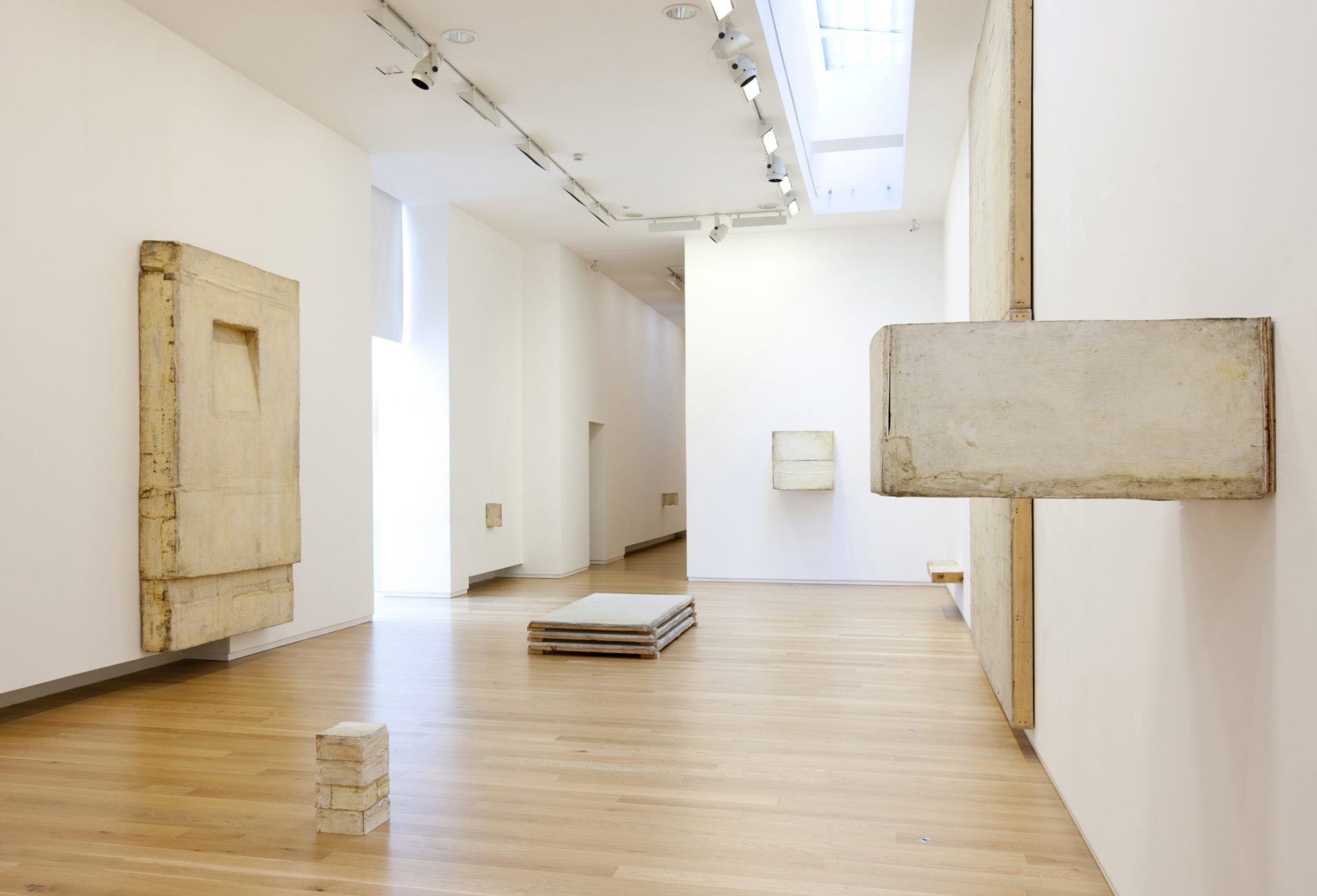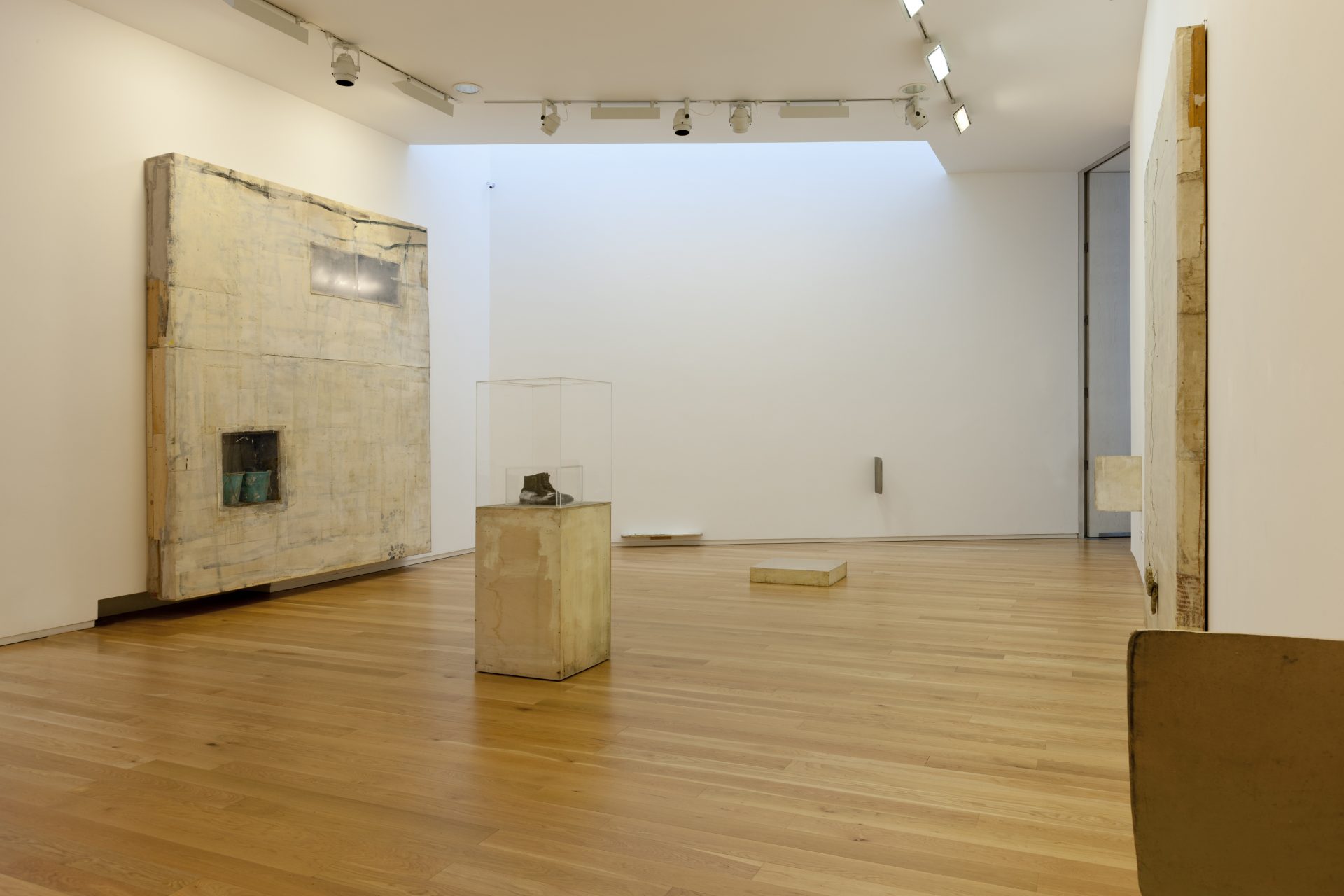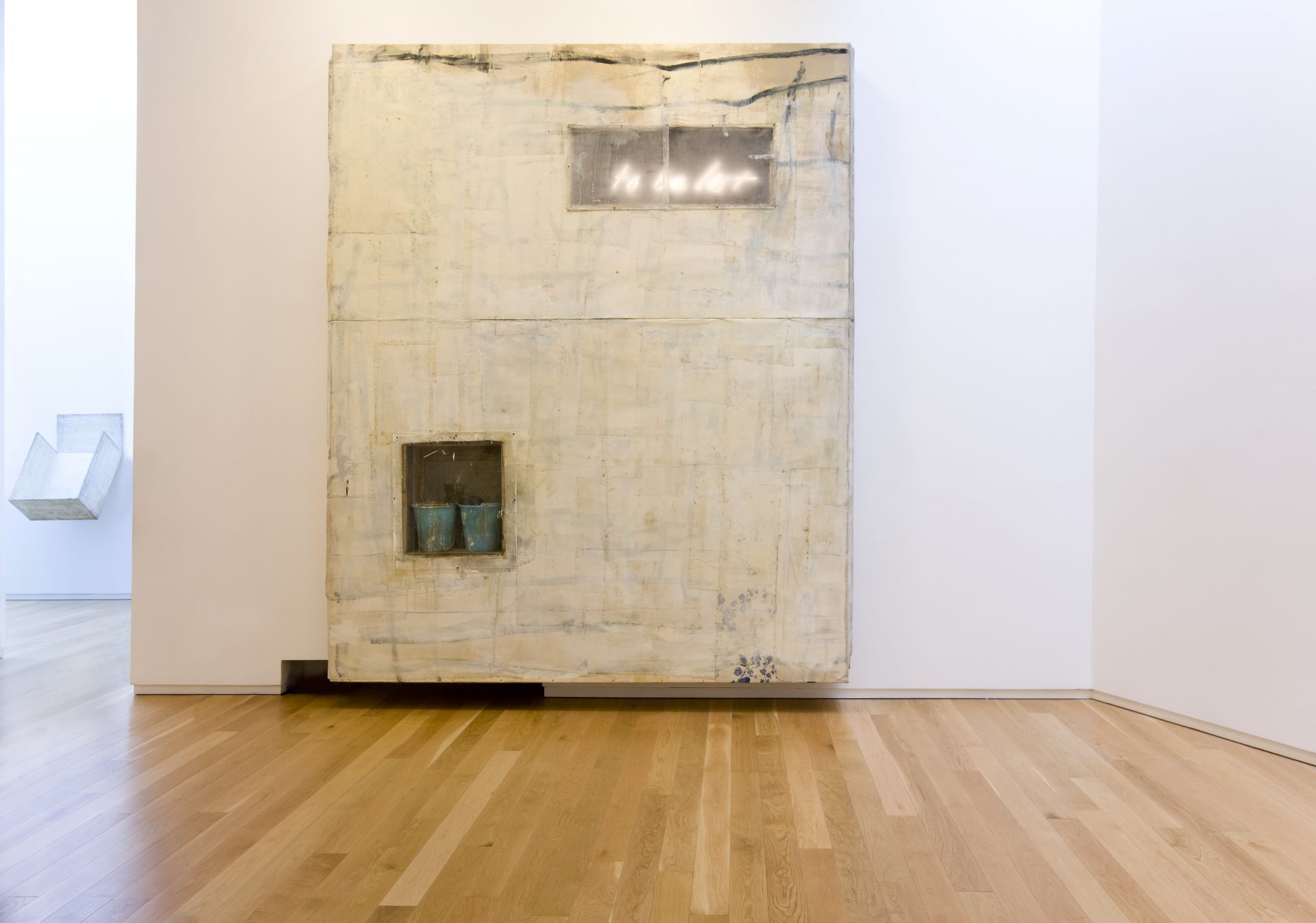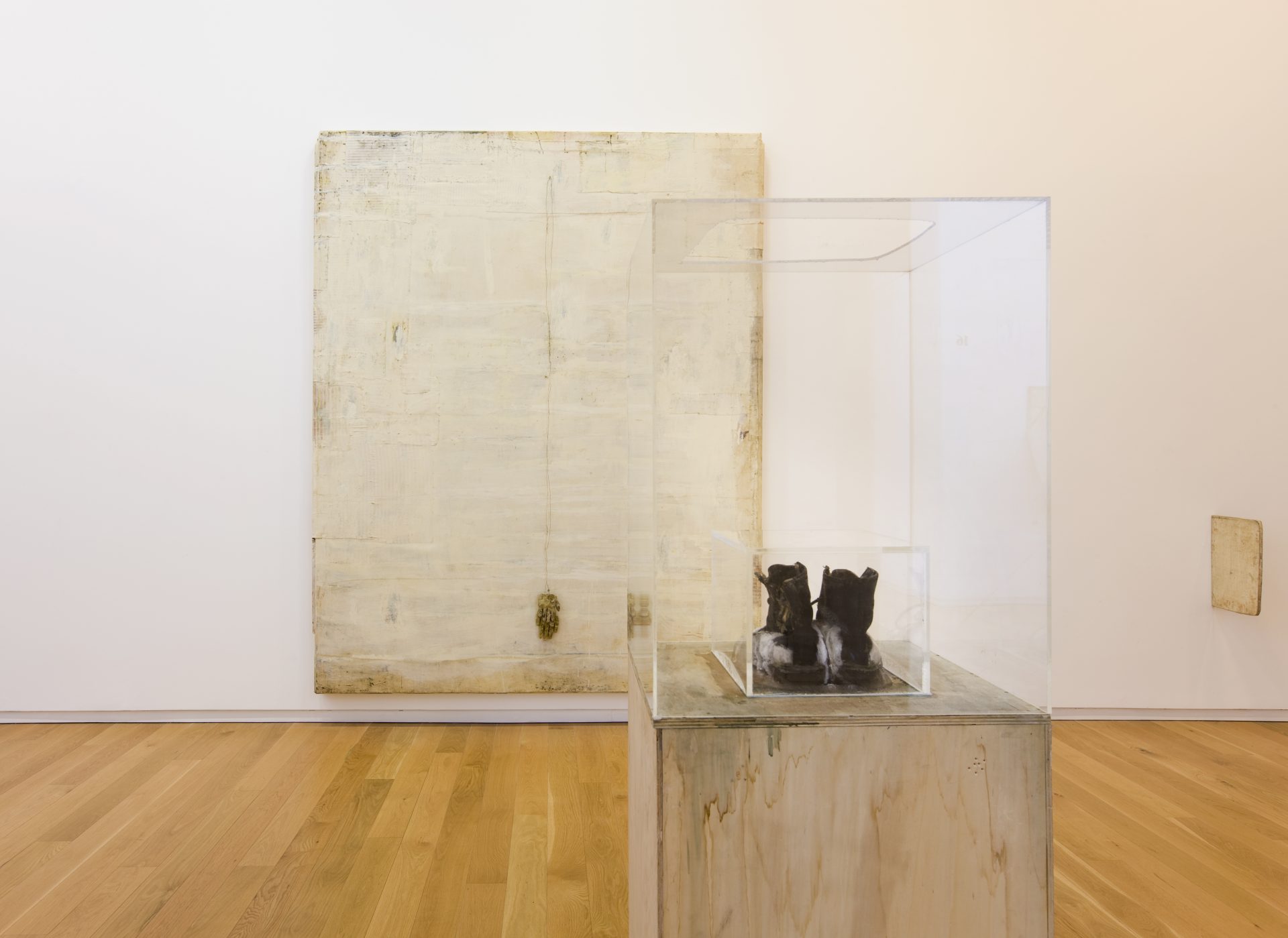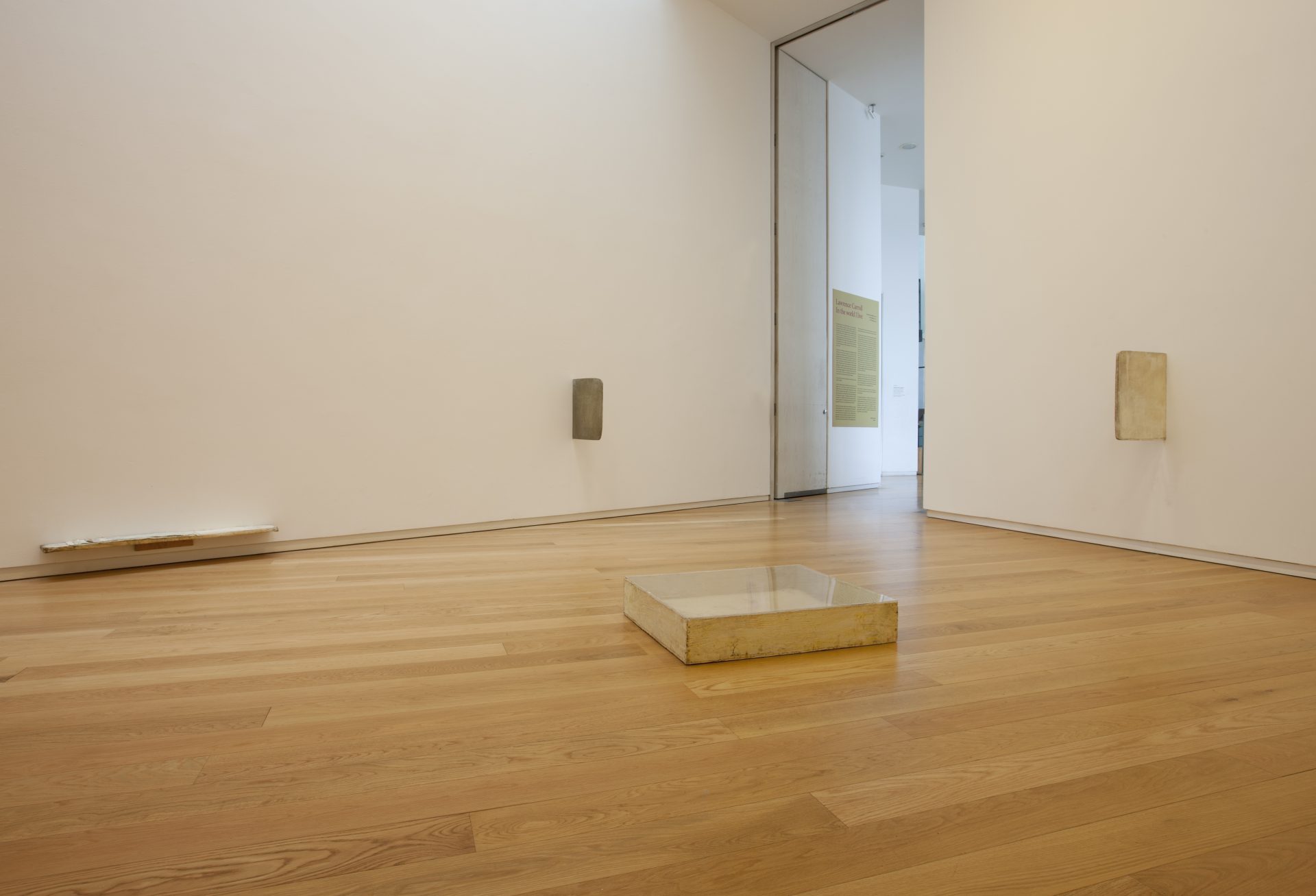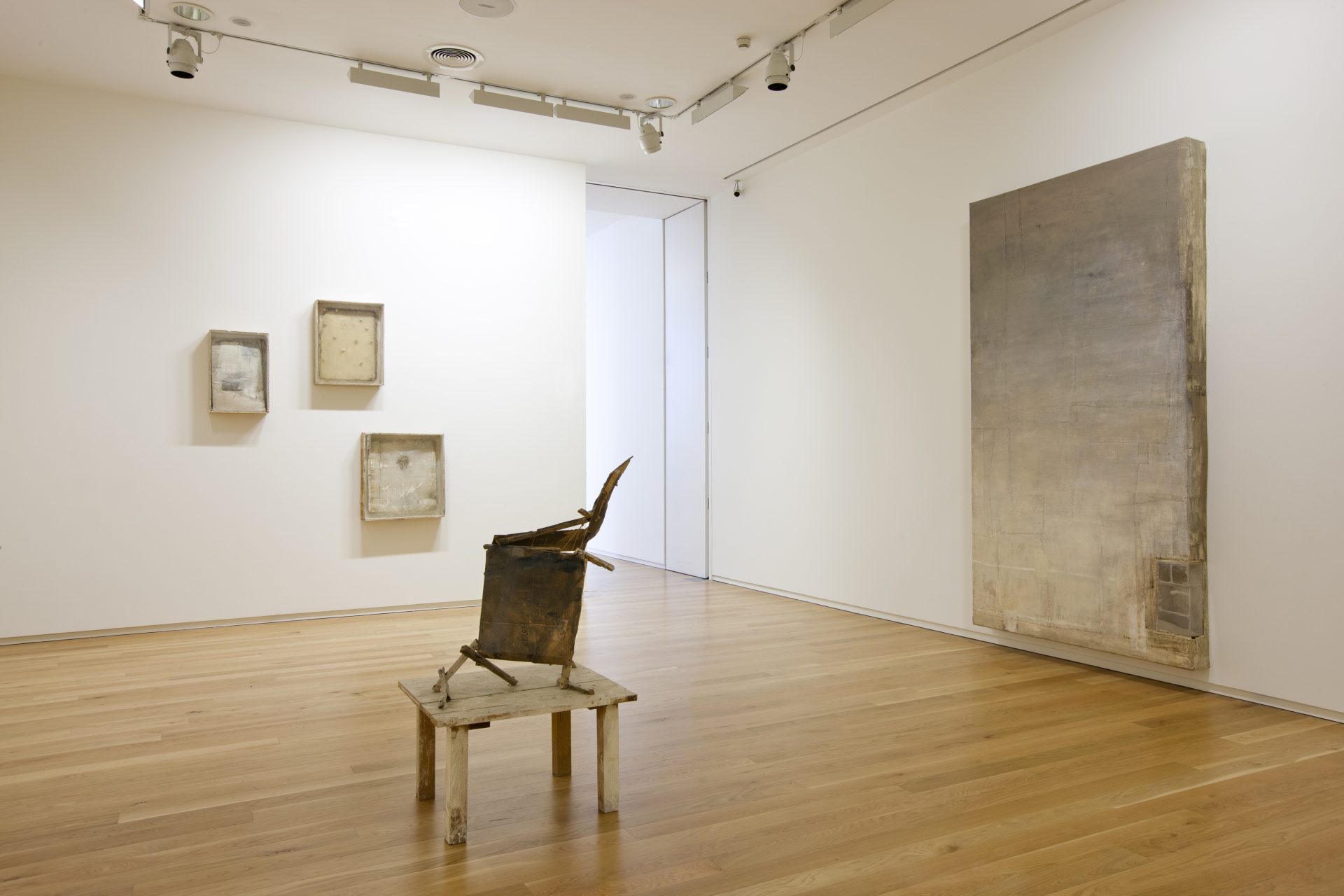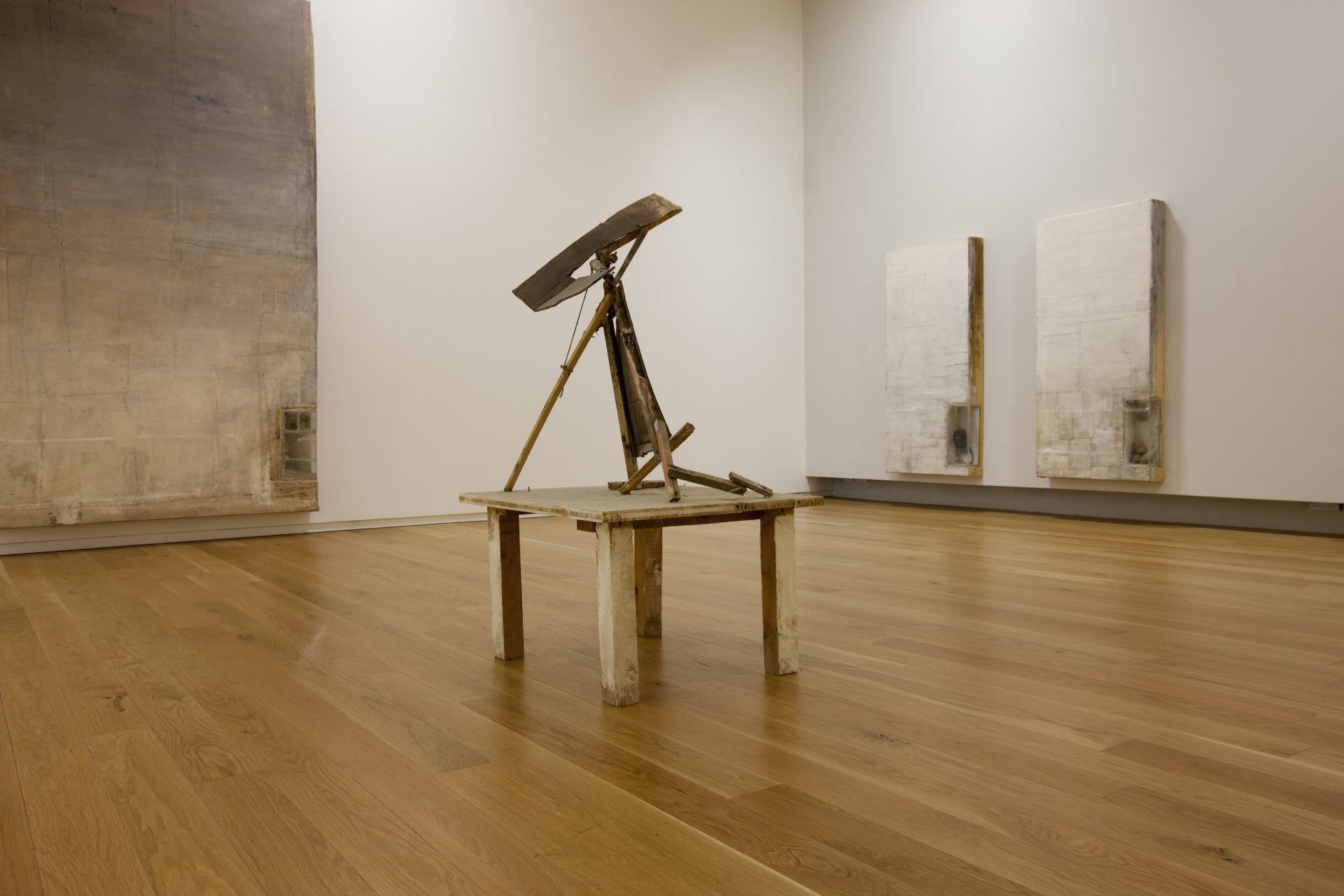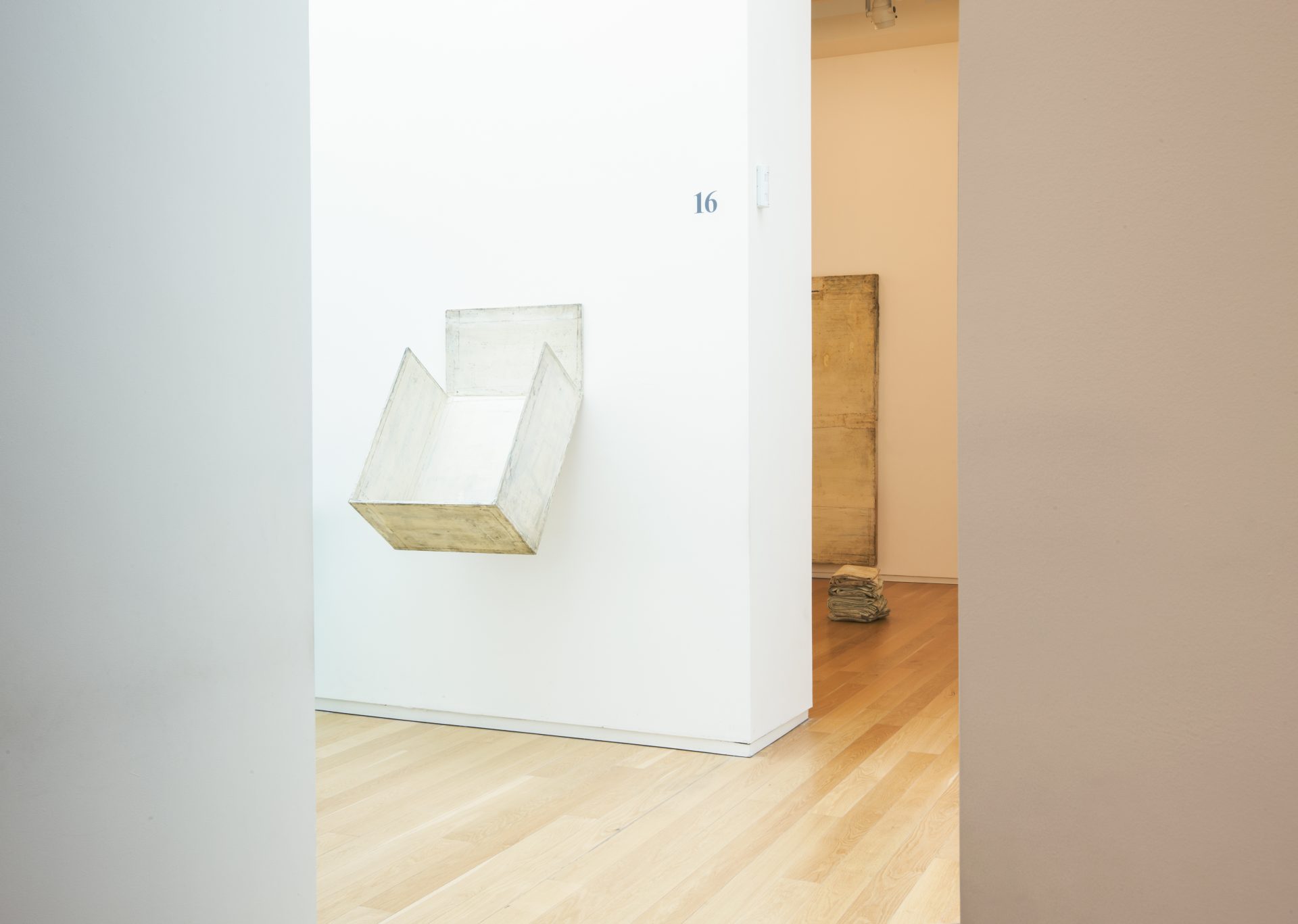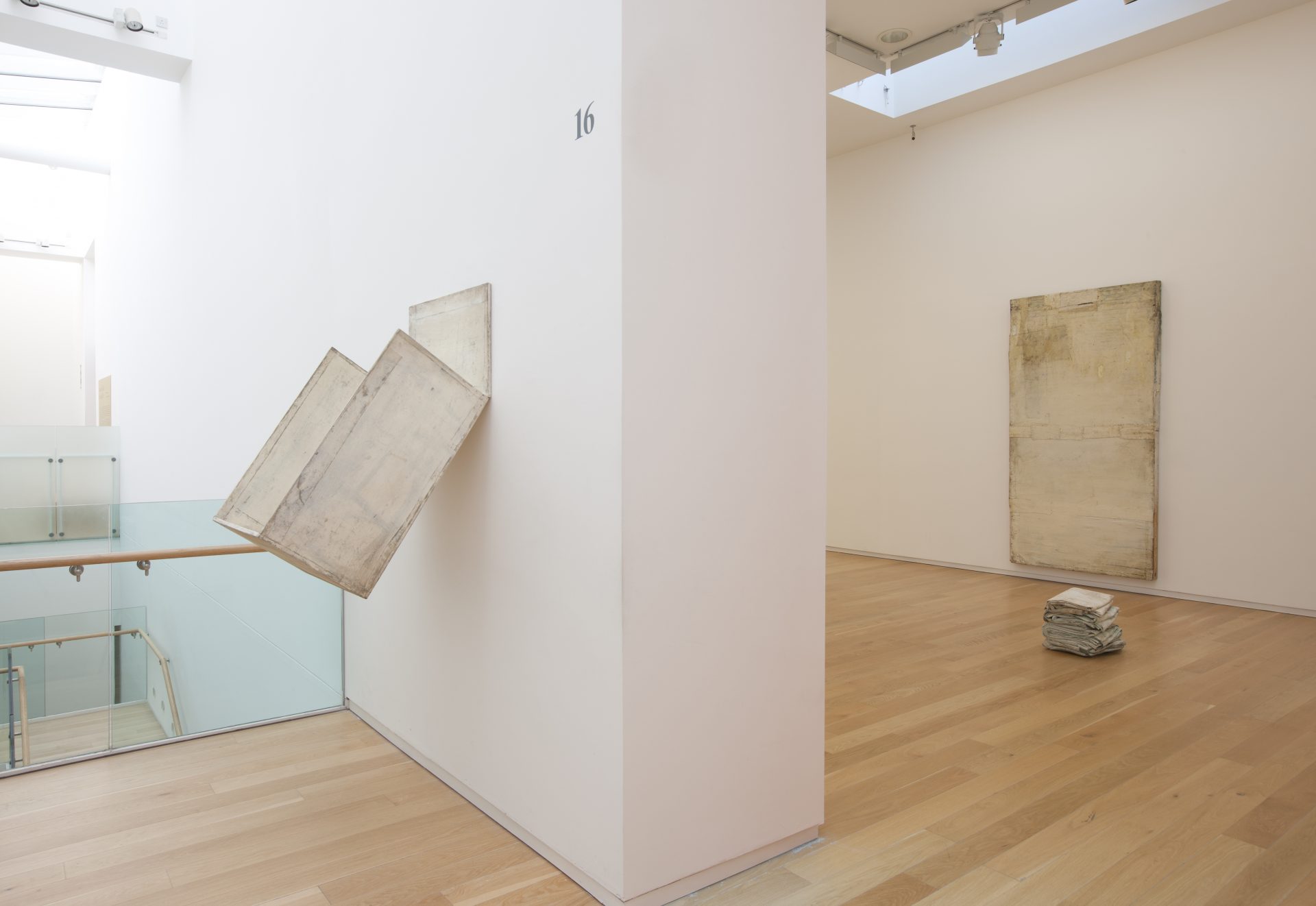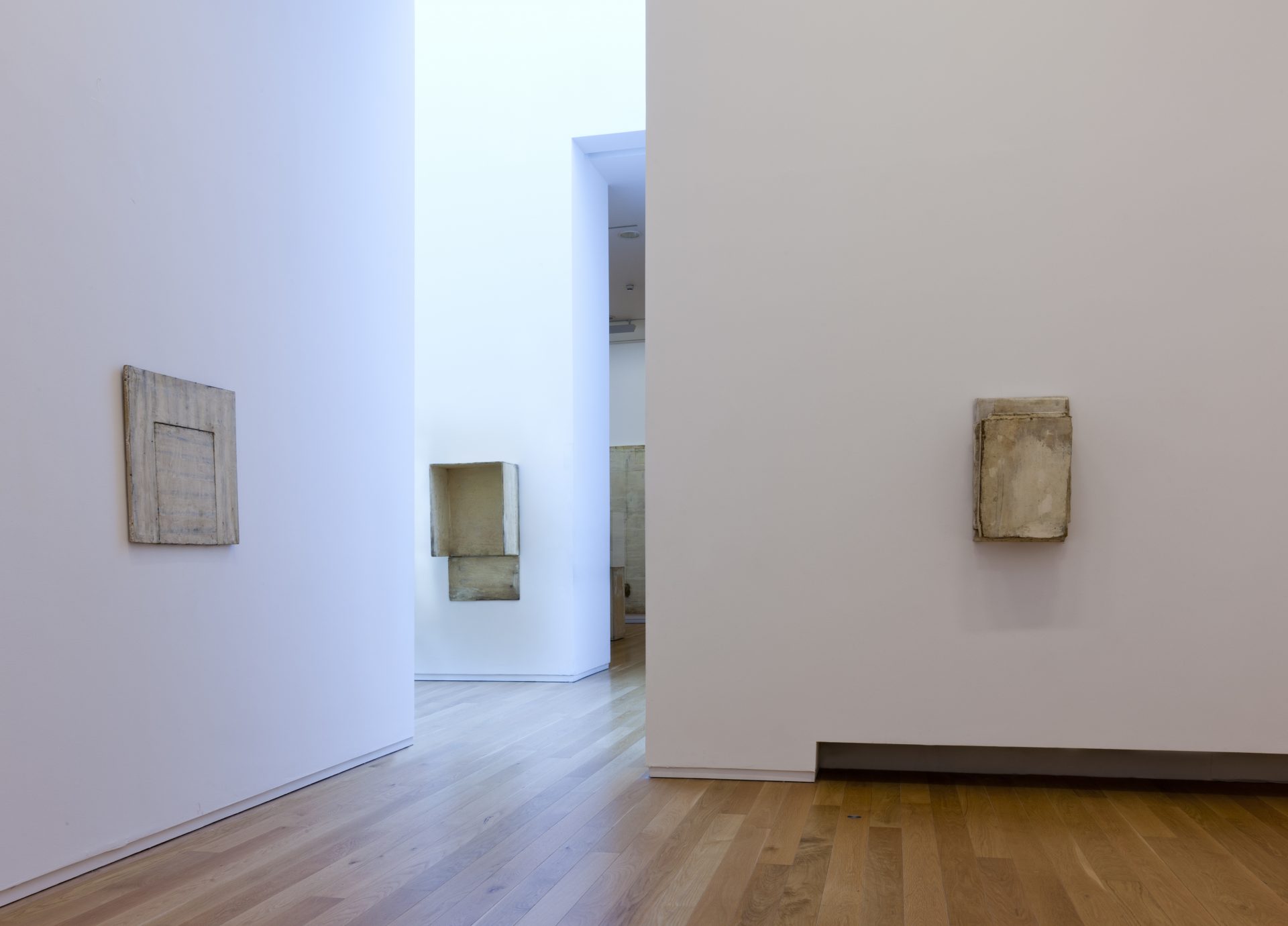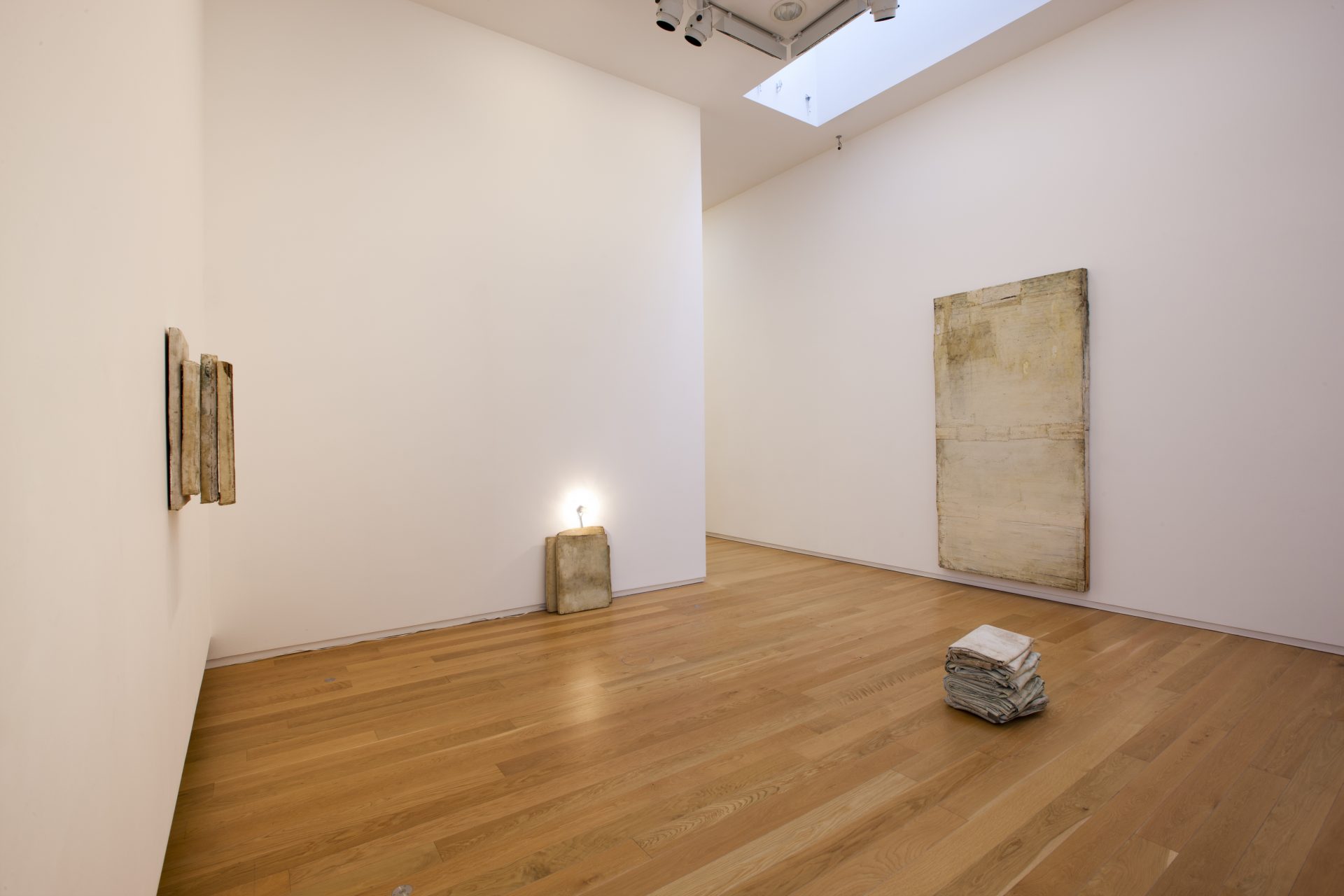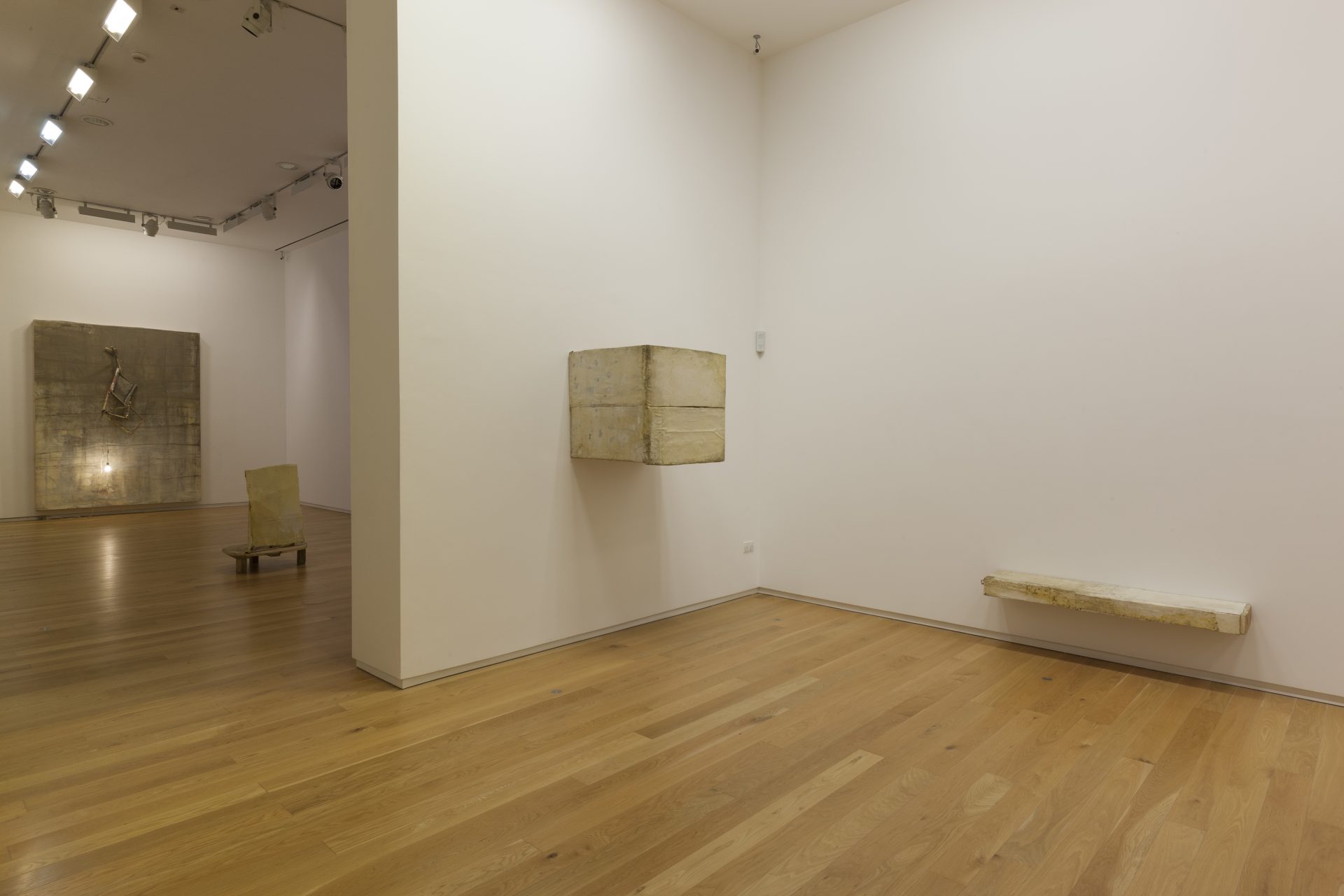Encountering Lawrence Carroll’s works is a curious experience. They are familiar yet strange. Are they painted sculptures or paintings? Stitched together, folded and illuminated, they push the concept of the painting beyond its traditional limits. Born in Australia to Irish parents, he grew up in California and moved to New York in the 1980s. In preparation for his 2012 solo exhibition at the Hugh Lane Gallery I went to meet Lawrence at his studio in Venice, Italy, which was his home from 2007. (These were the days when the oppressive heat charged the streets with heaving masses of tourists). Lawrence came to my rescue and channelled me across the lagoon by water bus and into his studio sanctuary on the island of Giudecca. A sequence of old warehouse spaces with only one obscure window, the rest artificially lit, hidden from the sun. It was here Lawrence had spent the last eight years [Like the Acarnanian Prince Sunless] surrounded by his work and archives of materials and memorabilia.
Carroll’s overall palette is muted—pale grays, dirty white, and sludgy creams—as he employs oil, wax, household paint, stitched canvas, and studio dust to create large paintings and smaller objects, both floor-based and protruding from the gallery walls. The paintings themselves have a three-dimensional aspect, in the layering and stitching of their canvases as well as the inclusion of folds, ledges, and even glass- and Plexiglas-paned windows. 1 Carroll often referred to himself as a storyteller when speaking or writing about his work. Creating the installation for the Hugh Lane allowed him to play with this notion of narrative, connecting abstract language with the world of representation and the human condition.
The exhibition was entitled ‘In the world I live’ and occupied five interlinking spaces allowing the viewer to wander back and forth between works from different periods of his practice from 1984 to 2012. In the 1980s, Carroll began to deconstruct the painting by cutting into the canvas surface and its support which prompts us to look at the sides, the tops, and the bottoms, as well as their fronts. “In my early paintings, it was impossible to see the entire painting all at once. It was also a way to slow down the viewer, to quiet down the room.” 2 The exhibition also included works such as the ‘Dust Paintings’ where the artist applied several layers of fine dust to the walls of the installation, while the ‘Page Paintings’ were small works, protruding at a ninety degree angle out from the wall, presented the narrowest of facades when approached frontally. Lawrence made it clear that he only develops his works during the work process itself: ‘Painting has these unpredictable moments and that is what they must stay for me, unpredictable. There can be routine in many ways in my life and studio but not when I paint.’ 3
Michael Dempsey
Footnotes
1 https://www.artforum.com/picks/dublin-city-gallery-the-hugh-lane-38485
-
Profile
Lawrence Carroll (1954-2019) studied at the Art Center College of Design in Pasadena, California in the 1970s; later he moved to Los Angeles and New York where he became an illustrator for magazines such as ‘The Village Voice’, ‘The New York Times’, ‘Ray Gun’ and other political periodicals. In 1989 he was invited by Harold Szeemann to exhibit at the Deichtorhallen in Hamburg, Germany, alongside international artists such as Joseph Beuys, Bruce Nauman and Robert Ryman. For thirty years, he exhibited widely in American, European, and Japanese art galleries and museums, and also exhibited in Documenta IX and the Venice Biennale. He is represented in the permanent collections of a number of museums and public galleries, including the Solomon R. Guggenheim Museum in New York City, the Los Angeles County Museum of Art, Los Angeles, Museum of Contemporary Art, Los Angeles (MOCA), The Margulies Collection, Miami, Museum of Contemporary Art San Diego, Jumex Collection Mexico City, MART Rovereto Italy, Panza Collection Varese, Italy, Panza Collection Sassuolo in Modena, Italy, Art Gallery of New south Wales, Sydney Australia. Stadtisches Museum Abteiberg Mönchengladbach Germany, Museo Cantonale d’Arte, Lugano and many other private and public collections worldwide.
-
Related Documents





